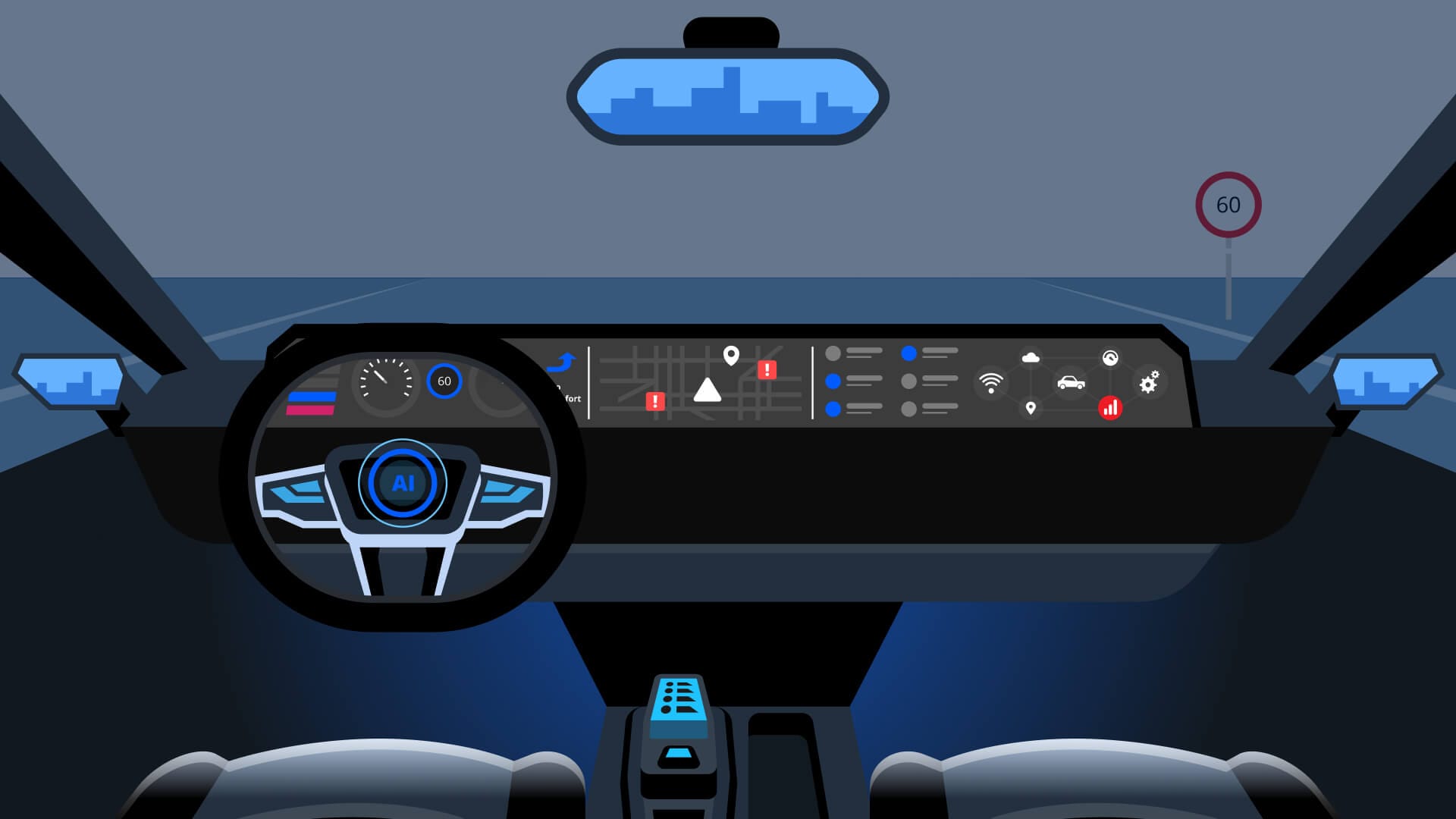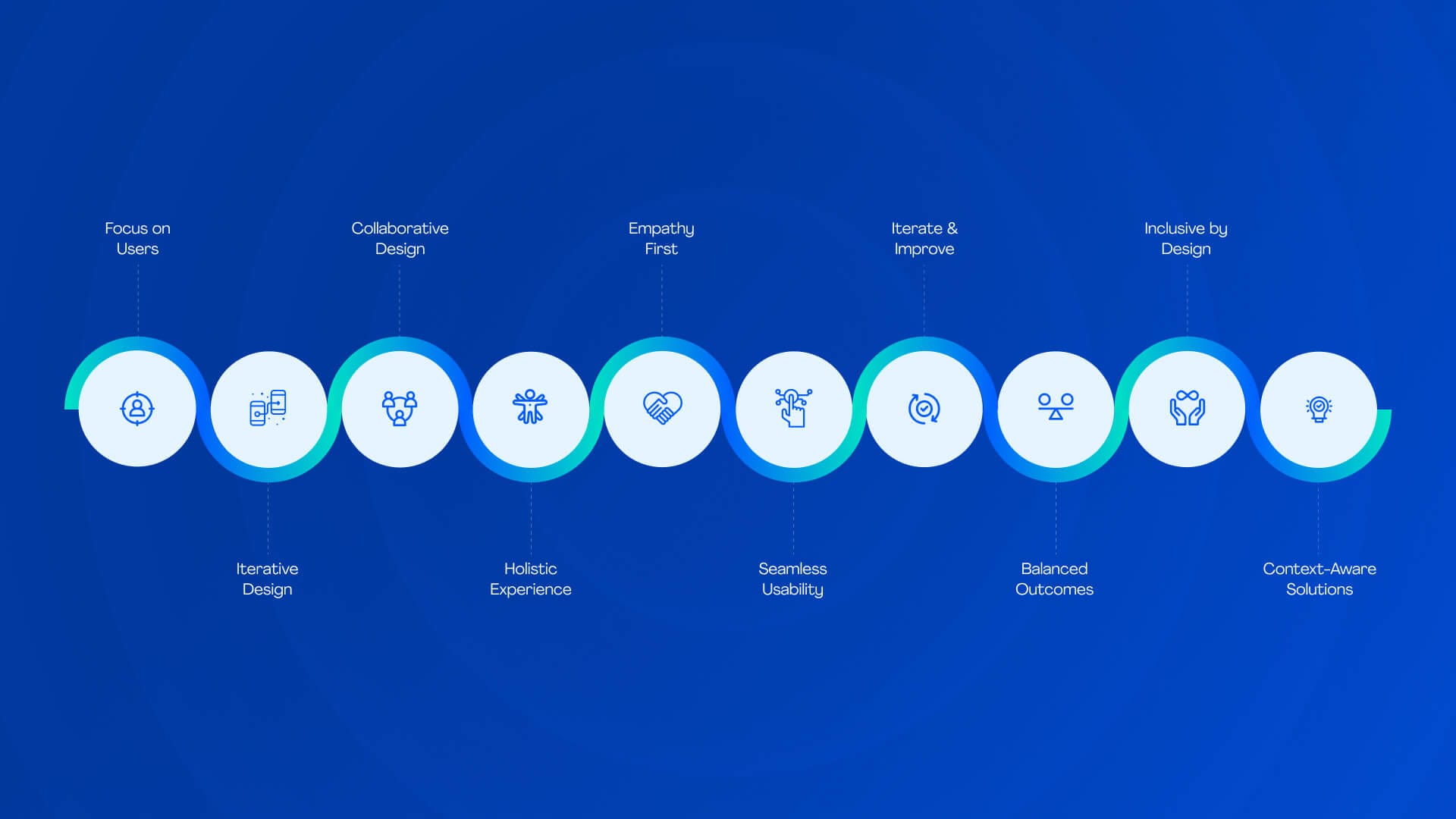Quick Summary: AI is reshaping every industry, and UI/UX design is no different. With the latest Generative AI advent, AI creates an outstanding user experience. But do you know how Gen AI makes all these happen? You have plenty of things to explore about how Generative AI transforms product design. We have this article to help you explore.
Generative AI is one of the crucial AI tools for UX designers, helping the team create personalized user experiences. It is transforming the design landscape, just like it is changing the world at the speed of light. This includes revolutionizing UI/UX design by automating processes, enhancing personalization, and offering data-driven insights. This technology utilizes machine learning algorithms trained on vast datasets of existing designs, user behavior, and design principles.
Generative AI has indeed a lot to offer to design agencies and we have picked up some crucial Generative AI elements for you to explore. Broadly, we have covered;
How generative AI is transforming UI/UX design
- The benefits it offers
- Challenges in its implementation
- And, the future trends
Let’s explore all these points in detail.
How Generative AI Transforming UI/UX Design
Generative AI is the latest advert that uses machine learning algorithms to help create personalized user experiences and user interfaces. It has become a game changer in UI/UX design. It helps designers generate creative output, but that's just one part, it reshapes UI/UX design in many ways.
Automated Design Generation
Generative AI tools can help designers create multiple design variations based on the inputs they use. Designers can input basic requirements or wireframes, and the AI generates high-fidelity design options. This speeds up the ideation phase and allows designers to quickly compare different design approaches.
Personalization
AI can analyze user data to create personalized interfaces. For example, an e-commerce site can use AI to tailor its layout and product recommendations to individual user preferences, enhancing the overall shopping experience. This level of personalization helps in increasing user engagement and satisfaction.
Enhanced Prototyping and Testing
Generative AI facilitates the rapid creation of interactive prototypes. These prototypes can be tested with users, and AI can analyze the feedback to identify pain points. This iterative process ensures that the final design is user-friendly and meets user needs.
Intelligent Design Assistants
AI-powered assistants provide real-time design suggestions and feedback, ensuring consistency and quality. Tools like Adobe Sensei help with color schemes, layout adjustments, and more.
Benefits of Generative AI in UI/UX Design
UI and UX designers can have many advantages of AI in UI/UX design. From higher efficiency and creativity to better user experience and data-driven design, Generative AI can disrupt the traditional design method.
Increased Efficiency
Generative AI significantly reduces the time required to create designs. By automating routine tasks, designers can focus more on the creative and strategic aspects of their work. This increased efficiency leads to faster project completion and reduced time-to-market, giving companies a competitive edge.
Enhanced Creativity
With repetitive tasks automated, designers can explore more creative solutions. AI-generated design variations serve as inspiration, allowing designers to think outside the box and innovate. This mixture of AI and human creativity leads to more unique and effective designs, pushing the boundaries of what is possible.
Improved User Experience
AI-driven personalization results in more relevant and engaging user experiences. By adapting interfaces to individual user behaviors and preferences, AI ensures that each user’s interaction with a digital product is tailored to their needs, leading to higher satisfaction and retention rates. This personalized approach can significantly boost user loyalty and brand reputation.
Data-Driven Design Decisions
Generative AI provides valuable insights from user data, helping designers make informed decisions. This data-driven approach ensures that design choices are based on actual user behavior and preferences, rather than assumptions, resulting in more effective and user-centric designs. This can lead to higher conversion rates and better overall performance of digital products.
Challenges of Implementing Generative AI Tools
Generative AI has a lot to offer to the design sector, but still, it has some challenges that can hinder many agencies from implementing the AI tool.
Ethical and Privacy Concerns
The use of generative AI raises ethical and privacy issues. The data collection and usage can make design agencies think twice before implementing the AI research tool —GenAI into their design process. Designers and companies must handle user data responsibly, ensuring transparency and compliance with privacy regulations like GDPR. Ensuring that user consent is obtained, and data is anonymized where possible can help mitigate these concerns.
Dependence on Data Quality
Generative AI’s effectiveness depends on the quality of the data it is trained on. Poor-quality data can lead to biased or suboptimal design outputs. Ensuring diverse and representative data sets is crucial for achieving accurate and fair AI-generated designs. Regularly updating and cleaning data sets can also help maintain the quality of AI outputs.
Imbalance of Automation and Human Creativity
Generative AI is at its early stage and it is programmed to learn and respond. While AI can automate many design tasks, such help research design ideas, understand market trends, and others, it’s essential to balance automation with human creativity. Designers must maintain control over the creative process, using AI as a tool to enhance their work rather than replace it. This balance ensures that designs retain a human touch and emotional resonance, which is crucial for creating compelling user experiences.
Technical Complexity
Implementing generative AI in UI/UX design can be technically challenging. It requires specialized knowledge and skills, and companies need to invest in training and resources to effectively leverage AI technologies. Additionally, integrating AI with existing design tools and workflows can be complex and time-consuming, requiring careful planning and execution.
What Are the Best Example of Generative AI in the Real World?
Generative AI recapping UI/UX design with many approaches. From personalized product recommendations, content, and suggestions to dynamic website layouts and effective design markups, generative AI can change the number game. We have explained some real-world examples of how generative AI helps web designers and businesses make a more significant impact.
GenAI Helping Spotify Deliver Personalized User Experience
Generative AI is helping Spotify deliver excellent user experience in a number of ways. For example, it offers an AI DJ. This feature allows Spotify to provide commentary on the music. That means AI helps recognize the preferences and behavior of the music and create commentary accordingly.
Another example is Music recommendation. Based on user, listening patterns, and sessions, GenAI generates a music recommendation list. Primary recommendations can also be based on release year, genre, mood, tempo, etc.
Generative AI Helping Airbnb with Process
Airbnb is repeating the benefits of generative AI in several ways. For example, generative AI efficiently handles this company's entire customer support department. For instance, generative AI automatically generates responses to common guest inquiries to Help initial customers get instant answers to their questions. Apart from this, the tool is also helping personalized recommendations for property listing based on user preferences. From automatic design workflow to optimizing pricing, Airbnb, with the help of generative AI, provides an excellent user experience.
Canva
Canva is the most prominent image and video creation tool that helps users make their designs. With the help of generative AI, the tool offers enhanced customization options. For example, with the help of tools, users can create images and videos directly from text prompts. Apart from this, with the generated AI integration, Canva has become more handy for even a person without advanced design. Skin can use the design to look like a pro. Based on descriptions, the tool can help create images and videos.
Future Trends of Generative AI
AI for Emotional Design: Emotional AI makes a digital product efficient enough to respond to user queries after recognizing and interpreting the queries. It involves an intense process in which AI for emotional design is empowered by machine learning and deep learning algorithms. That means it can analyze data, understand facial expressions, identify gestures, and recognize tones or voices to understand the actual emotional state of users. AI for emotional design, also known as practical computing, artificial emotional intelligence, and emotional AI, is similar to machine learning, mixed learning, and data analytics.
The purpose of this AI design tool is to establish a natural interaction between machines and humans. On one hand, it eradicates the need for humans to respond to queries of users; it reduces human error to a minimum while keeping the human touch in customer interaction intact.
Seamless Integration with Design Tools: Generative AI is crucial and AI tools for tools for UI/UX design. It makes access and use of AI-powered features, such as research, analytics, and others easier. This integration will streamline workflows and enhance the overall efficiency of the design process, making advanced AI capabilities accessible to a broader range of designers.
More Sophisticated AI Models: With time, AI advances as it learns and responds. It will lead to more sophisticated models capable of understanding complex design principles and user behaviors. These models will produce more accurate and relevant design outputs. It will further enhance the design process and push the boundaries of what AI can achieve in UI/UX design.
Collaborative AI-Designer Workflows: Future AI systems will facilitate more collaborative workflows between AI and human designers. AI will act as a creative partner, providing real-time feedback and suggestions while allowing designers to retain control and creativity over their work. This collaborative approach can lead to more innovative and effective designs.
Enhanced User Interaction and Feedback: Generative AI will enable more interactive and engaging user experiences by dynamically adapting interfaces based on real-time user interactions and feedback. This continuous feedback loop will lead to ever-improving user experiences, ensuring that digital products remain relevant and effective over time.
Broader Adoption Across Industries: As generative AI becomes more accessible and user-friendly, its adoption will spread across various industries beyond traditional tech sectors. Healthcare, education, finance, and other industries will leverage AI-driven design to enhance their digital products and services, leading to widespread improvements in user experiences across different sectors.
Step-by-Step Process: How to Implement Generative AI in UI/UX Design
Implementing generative AI into UI and UX design can have a magical impact on the entire design process. It can automate design iterations and Help designers personalize user interfaces, optimize layouts, and maintain quality throughout the process. It will contribute to effective and speedy design as designers will get handy tools like generative, creative design, elements, and data to bring impact to the digital product. You need to follow a few steps to implement generative AI into user interfaces and user experience design.
Understand the need for generative AI
Anything and everything begins with concept generation; hence, you need to brainstorm various design ideas, understand the need, and just demand. You can create concept generation layout optimization and visual element creation based on that.
Collect data
Once you are done with use cases or understanding the need for generative AI in the design process, you must collect user data. For example, properly analyze the existing designs, target users, market, and feedback it has received from real users. These data will help you take further courses of action in design.
Select the right AI generator tools.
Now, you need to select the tool. For that, you have two options.: first generative design platforms, such as Adobe Firefly, Figma Design, runway, ML, and others. Second is data analysis tools like Uizard, Adobe, and Sensei.
Look at the Best AI Tools for UX Designers
Gather and organize data
With data and tools in place, you must ensure your data is collected and organized correctly. For example, data such as brand guidelines, design, style, examples, and all the relevant information. Apart from this, you need to organize the data well-structured. Data should be labeled to help you make the process smoother.
Train the AI model
Data will provide proper training for your AI model. So, the data you have collected and organized will help you provide accurate training. Ensure all users, data, brand guidelines, and style examples are appropriately organized.
Decide proper guidelines and feed your system with prompts
When you design a digital product, you must have a design goal. That means you need to communicate what you want to achieve by integrating generative AI into the design. With this, you also need to set parameters and limitations. For example, color palette, typography, And layout restrictions are correctly implemented and instructed. Go through an iterative and refining process to come up with the final solutions.
Conduct proper testing
Once you're done with the process, you need to go through testing. Test the UX design among real users and validate the concept.
Final Thoughts
Generative AI is transforming UI/UX design from all perspectives, albeit it's still too early to predict everything accurately. But, for TheFinch Design, Generative AI is just a tool to polish our creativity. Even though we make the best use of Generative AI in our process, we are not widely dependent on AI tools. We use them to enhance the design our experts create. If you are looking for highly creative UI/UX design that appeals to your users, we are your top UI and UX design agency. Connect with today with your project scope and see how our synergy works.
Ravi Talajiya
CEO of TheFinch
With over a decade of experience in digital design and business strategy, Ravi leads TheFinch with a vision to bridge creativity and purpose. His passion lies in helping brands scale through design thinking, innovation, and a deep understanding of user behavior.





















